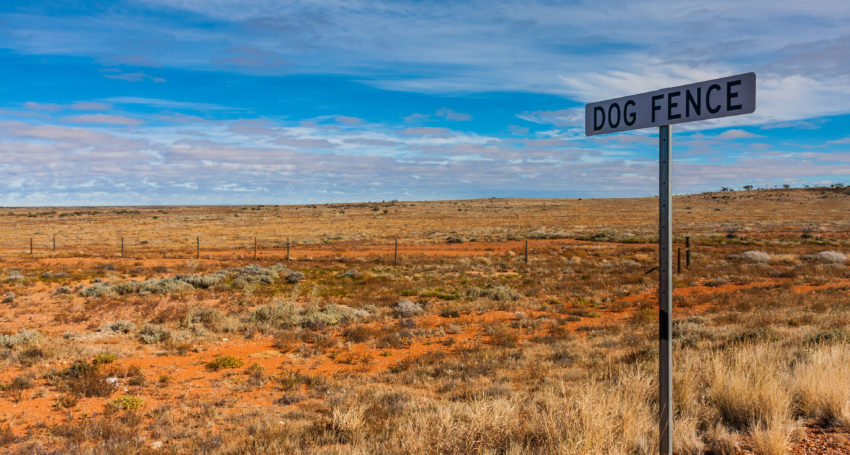[vc_section full_width=”stretch_row” parallax=”content-moving” css=”.vc_custom_1598578799087{background: #2d2d2d url(https://solmediastage.wpengine.com/wp-content/uploads/2020/08/pic4.png?id=6790) !important;background-position: center !important;background-repeat: no-repeat !important;background-size: cover !important;}”][vc_row][vc_column][vc_empty_space height=”100px”][vc_single_image image=”6777″ img_size=”600×275″ alignment=”center”][vc_empty_space height=”20px”][/vc_column][/vc_row][vc_row][vc_column][vc_empty_space][/vc_column][/vc_row][/vc_section][vc_row full_width=”stretch_row_content”][vc_column width=”1/2″][vc_empty_space height=”12px”][vc_single_image image=”7158″ img_size=”full” alignment=”center”][vc_empty_space height=”13px”][/vc_column][vc_column width=”1/2″][vc_empty_space height=”12px”][vc_column_text]
Wild dog fence goes online to help rebuild
Virtual imagery following 2150 kilometres of the famous dog fence across northern South Australia is being used to pinpoint key sites to begin rebuilding the ageing structure.
A new online tool uses 1,781 photographs of the century-old fence built to protect the state’s $1.6 billion sheep industry from wild dogs travelling from northern Australia.
Dog Fence Rebuild manager Lindell Andrews has been scrutinising the results to pinpoint damage to the fence and find the most challenging outback terrain such as creek bed openings or limestone and sand drifts.[/vc_column_text][vc_column_text]Click here to read the full story[/vc_column_text][vc_column_text]Please select a valid form[/vc_column_text][vc_column_text]← Back to the voting hub[/vc_column_text][vc_empty_space height=”12px”][/vc_column][/vc_row]

